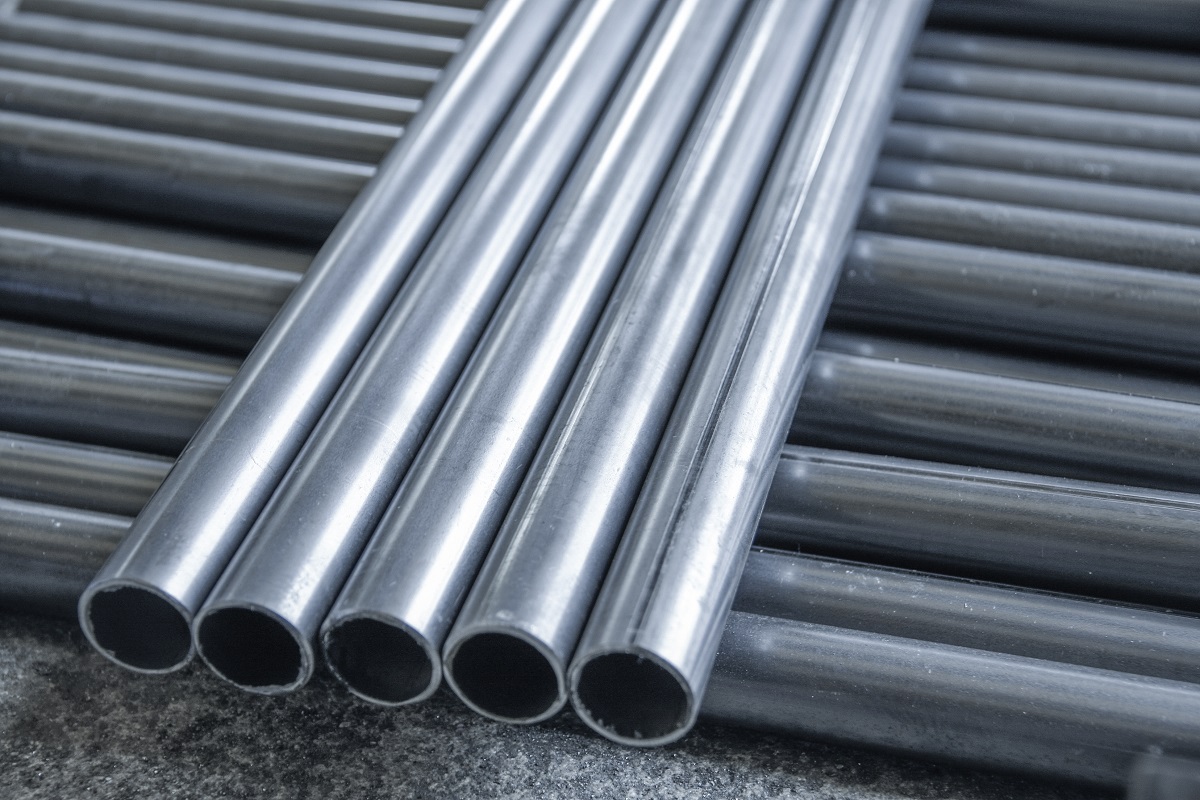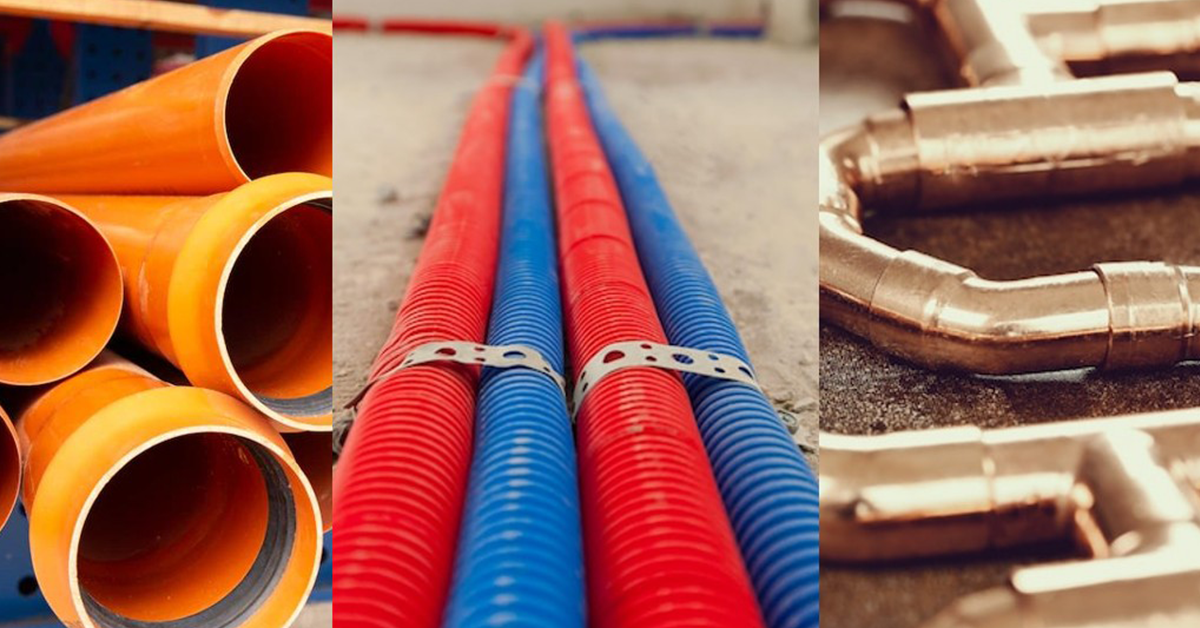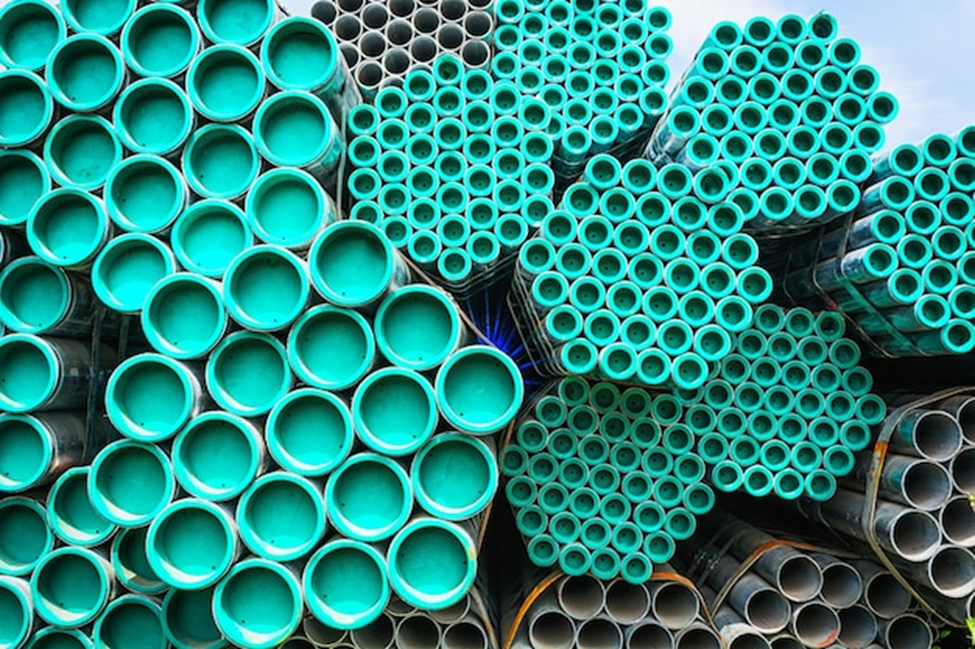Several types of plumbing pipes can be used for residential homes or commercial buildings. The decision between the two is based on how their use and installation. It is important to know what types of pipes you need to use for your next construction project.
This article will cover the various plumbing pipes, their uses, and other plumbing-related innovations.
1. PEX Pipe
PEX, or cross-linked polyethylene pipe, is a relatively new and commonly used type of pipe. PEX is only used to carry water. This flexible pipe can go through walls and ceilings and basement and crawl spaces while still being strong enough to handle high water pressures.
PEX has made water-supply pipes easier for both DIYers and professional plumbers.
Pros and cons: PEX piping is extremely flexible, needing fewer connections are required, and expects fewer leaks. It’s unfit for the outdoors, though.
2. PVC Pipe
Photo Courtesy: Freepik
PVC pipe (polyvinyl chloride pipe) is a type of plumbing pipe that is commonly used for drains and vent lines.
PVC first became popular because it was lighter and easier to work with than galvanized steel tubing. Installing a PVC pipe isn’t too hard, and it only takes a hacksaw and a miter box for cutting. Solvents hold together it.
Pros and cons: PVC pipes are durable, and non-toxic. Plus, they are cheap. PVC pipes can only handle fluids up to 140 degrees Fahrenheit, and making a connection involves two steps: primer and cement.
3. Rigid Copper Pipe

Photo Courtesy: Freepik
Several water lines at home are made of rigid copper wire. Rigid copper can be easily cut with a hacksaw or a specialized copper tube cutter. This type of pipe is ideal for water distribution because it doesn’t pose any health risks.
Pros and cons: Copper pipes are corrosion-resistant and durable. They can withstand both hot and cold water, but they are costly and difficult to use in small places.
4. ABS Pipe
ABS (acrylonitrile butadiene styrene) pipe is mostly used for drainage and venting.
Most of the time, ABS pipe is used for ventilation and drainage. ABS pipe looks a lot like PVC pipe, but it is black and significantly softer. It’s important to check your local codes if you don’t know where this product can be used.
Pros and cons: ABS pipes are also durable. They are also cheap and easy to connect. However, these pipes contain BPA which may cause cancer.
5. CPVC Pipe
CPVC, or chlorinated polyvinyl chloride, is like PVC pipe and used for the same things. The chlorine adds strength and durability to the plastic, making it more durable than PVC.
However, CPVC is more expensive than PVC and can tolerate hot fluids up to 200 degrees Fahrenheit.
Pros and cons: CPVC pipes are durable and can handle up to 200 degrees Fahrenheit, but they are more expensive than PVC. This type of pipe also requires a two-step connection process.
RELATED: 5 Latest Innovations in Construction Materials that Will Transform the Industry’s Future
6. Galvanized Steel Pipe
Photo Courtesy: Freepik
Galvanized steel pipes were first introduced as an alternative to lead piping. Before the 1980s, they commonly used it for drain, waste, and vent piping.
Gas pipelines are now widely usinng galvanized steel. When you use a galvanized pipe, it has threaded connections that make it easy to connect.
Pros and cons: Galvanized steel pipes are also durable but they can rust and can contaminate fluids with lead. These pipes are prone to clogging because of mineral buildup.
7. Cast-iron Pipe
Cast-iron pipe is not widely used in residential plumbing, however, you can still find it in certain older homes. Cast-iron pipe is commonly used for sewer and drain lines, as well as commercial and civic piping for water distribution.
Pros and cons: Cast-iron pipes are heat resistant and reduce fluid sound. However, this pipe is heavy and is subject to rust and mineral buildup.
8. High-density Polybutylene
HDPE piping, or high-density polybutylene piping, is only used underground and may be required by regulation for certain types of plumbing. HDPE piping is flexible and performs well in cold temperatures, but it should not be exposed to direct sunlight.
Pros and cons: High-density polybutylene pipes are corrosion-resistance, flexible and good in cold weather. However, it can crack in high temperatures and melt in direct sunlight.
9. Polybutylene
Polybutylene is a plastic pipe that was used from the 1970s to the 1990s, but it isn’t used now. You should get rid of this type of pipe as soon as possible if you have it in your home or business before it breaks down.
Polybutylene was only used for water supply piping and stamped PEB2110.
10. Black-iron Pipe

Photo Courtesy: Supreme Pipe
Black iron used to be for water supply piping, but it is now mainly used for gas or propane lines, and fire sprinklers. Black iron pipe is sturdy, durable, and resistant to high temperatures.
Pros and cons: Balck-iron pipes are durable and heat-resistant. However, these pipes are heavy and difficult to install.
RELATED: 7 Common Drainage Problems and How to Fix Them
Difference of Commercial and Residential Plumbing
Leaks, damaged pipes, and broken toilets are all worries that commercial and residential plumbers deal with. Their working conditions and specific roles may differ.
The following are the key differences between commercial and residential plumbing:
1. Building Dimensions
Commercial plumbing is more complicated than residential plumbing for many reasons, one of which is that it is usually done in a bigger structure.
Larger buildings need more sinks, toilets, outlets, and pipes to accommodate more tenants and visitors, which makes the plumbing system more complicated. Also, commercial buildings may use more water, which may lead to bigger fixtures and pipes, which may require special tools and techniques to fix. This could lead to more incidents and more regular maintenance.
Commercial plumbing also requires a lot more knowledge, skill, and professional tools than domestic plumbing.
2. Drainage
Unclogging a clogged drain in a household setting is a simple task.
For plumbers, a drain snake can easily unclog obstructions in sewage lines, toilets, shower drains, and kitchen sinks. Although they may have to deal with things like broken lines or root infections, the procedure is still simple.
Snaking drain lines in a large business structure, particularly in a high-rise building, can be much more complex. When a clogged drain reaches the end of the line, a plumber must remove everything in its path, including the line itself. They’ll have to check for obstructions on every floor below and clear the drain pipe. Flooding and other difficulties can arise in the units below if they miss a clog.
3. Detecting Leaks
In most homes, finding leaks isn’t a tough task. Plumbers can swiftly narrow down their search for a leak by excluding what isn’t leaking. They can also use specialist equipment to find a slab leak.
However, for a large business facility, that there are so many places where plumbing leaks can happen makes it more difficult to find them. It may be required to cut through walls and ceilings occasionally.
RELATED: 8 Most Common Plumbing Problems and Plumbing Tools
Latest Innovations in Plumbing
Many of us are unaware of how far the plumbing industry has progressed, as well as how technological advancements may help to make homes cleaner, more comfortable, and more efficient and environmentally friendly.
Look at these five technological advancements in the plumbing industry.
1. Touch-free Plumbing Fixtures

Photo Courtesy: Pinterest
Touchless plumbing fixtures, like toilets and faucets that turn on and off and flush themselves, are becoming more popular in houses. Sensors are used to control the operation of touchless plumbing fixtures.
This technology is enticing to homeowners because it prevents the spread of germs and bacteria while also keeping things clean. It also saves water, which allows people to be environmentally friendly and saves money on their water bill at the same time.
2. Water Heater Without Tanks
With plumbing technology, recent advancements have focused on being environmentally friendly. A good example is a tankless water heater.
Traditional water heaters use more energy than tankless water heaters since they heat water on demand.
3. Power Flushing
Power flushing, also known as hydro jetting, is used to clear clogged drains with more serious obstructions. Power flushing involves shooting high-pressure water down drains and sewer lines.
Power flushing services are a more modern option to snaking when dealing with major clogs.
4. Low-flow Toilets
Low-flow toilets save water and are a very eco-friendly option, not to mention the money they save.
They were criticized when they first came out on the market for not removing waste as effectively as a regular toilet. Low-flow toilets have come a long way to flush power and are now practically indistinguishable from regular toilets.
5. Greywater Treatment Systems
Greywater systems are another green plumbing innovation.
Greywater systems allow people to reuse water from the shower, washing machine, and sink. This water is extremely clean, with very few pathogens.
Subscribe now to see more content like this in the future!
CITATIONS:
- Bowcott, M. A. (2021, November 23). 10 Types of Pipes Used in Plumbing. MT Copeland. Retrieved February 11, 2022, from https://mtcopeland.com/blog/10-types-of-pipes-used-in-plumbing/
- Wallender, L. (2022, January 29). 5 Main Types of Plumbing Pipes Used in Homes. The Spruce. Retrieved February 11, 2022, from https://www.thespruce.com/basic-types-of-plumbing-pipes-1822487
- Dahme Mechanical Industries. (n.d.). What’s the Difference Between Commercial and Residential Plumbing? Retrieved February 11, 2022, from https://dahmemechanical.com/news/commercial-and-residential-plumbing/
- Brothers Plumbing. (n.d.). 4 Technological Advancements In The Plumbing Industry. Retrieved February 11, 2022, from https://www.brothersplumbing.ca/blog/plumbing/4-technological-advancements-plumbing-industry/
![]()












